Penguin Adaptations - Quick-Look
An illustrated overview -
more quick looks
A brief introduction to the ways that Antarctic penguins are adapted to their environment. 15 images with simple captions and links to the larger picture page as a slide-show.
In more detail: Adelie penguin adaptations | Emperor penguin adaptations | Penguin adaptations to cold
Slide Pack - Start slideshow here
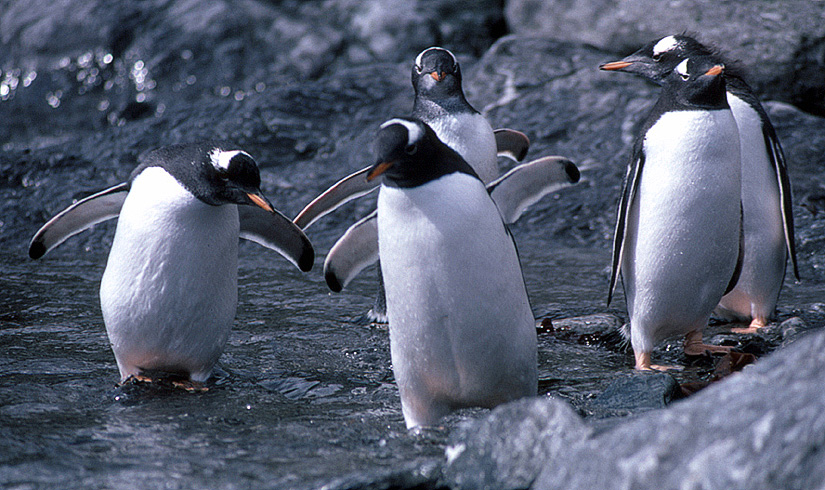 1 - Penguins waddle when they walk - this saves
them energy because they are tall with short legs.
1 - Penguins waddle when they walk - this saves
them energy because they are tall with short legs.
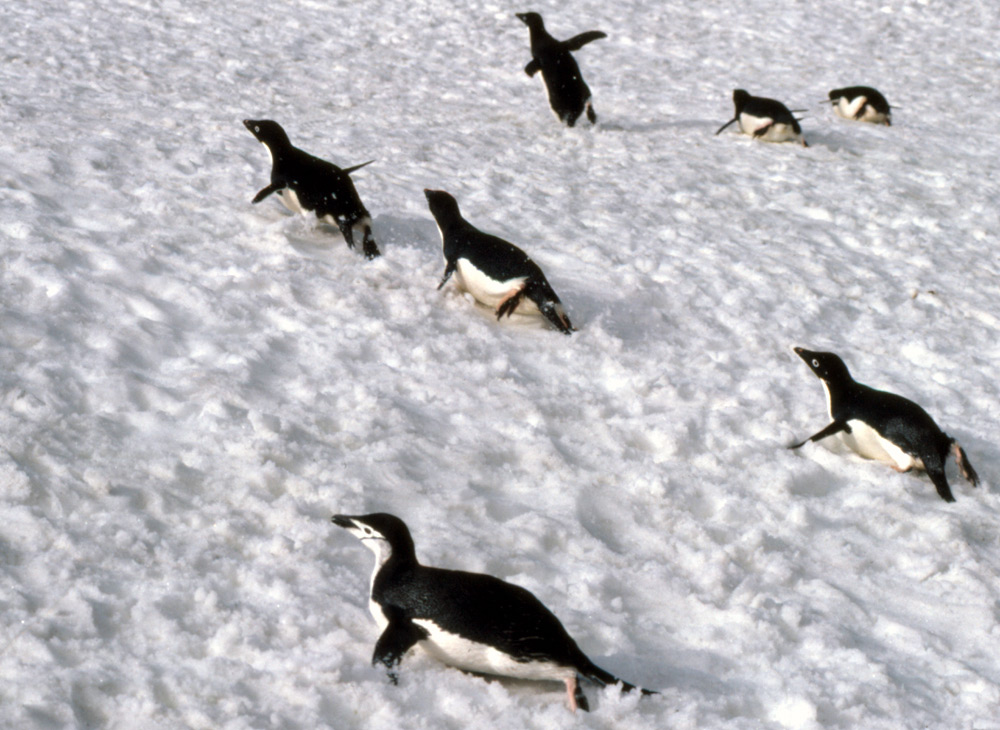 2
- Penguins move fastest on snow and ice by "tobogganing"
- they lie on their front and push themselves with their
feet, they can go faster than you can run.
2
- Penguins move fastest on snow and ice by "tobogganing"
- they lie on their front and push themselves with their
feet, they can go faster than you can run.
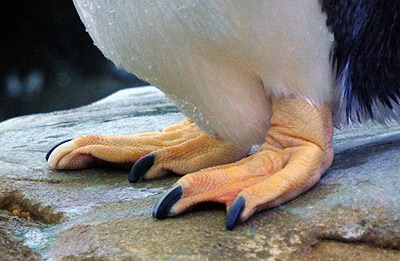 3
- Penguins have strong claws and strong short legs,
these grip onto slippery rocks or ice when they come
out of the sea.
3
- Penguins have strong claws and strong short legs,
these grip onto slippery rocks or ice when they come
out of the sea.
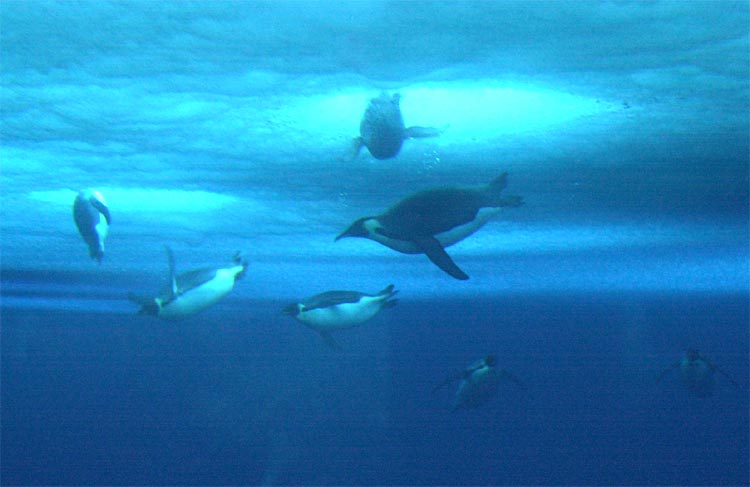 4
- Penguins pull their feet in close for streamlining
when swimming, like an aircraft pulling in its wheels
Penguins can stick a foot out as a water-brake, they
can turn and head back where they came in 1/5th of a
second.
4
- Penguins pull their feet in close for streamlining
when swimming, like an aircraft pulling in its wheels
Penguins can stick a foot out as a water-brake, they
can turn and head back where they came in 1/5th of a
second.
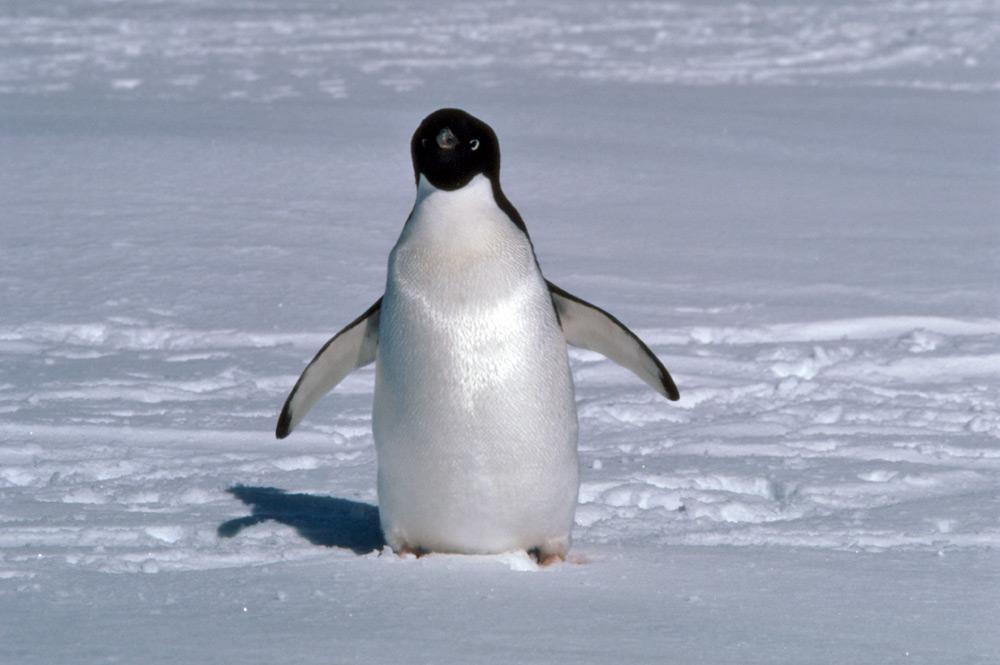 5
- Penguin "wings" are adapted to be short,
stiff flippers for "flying" in water.
The elbow and wrist joints are fixed to give a rigid
flipper for swimming underwater.
5
- Penguin "wings" are adapted to be short,
stiff flippers for "flying" in water.
The elbow and wrist joints are fixed to give a rigid
flipper for swimming underwater.
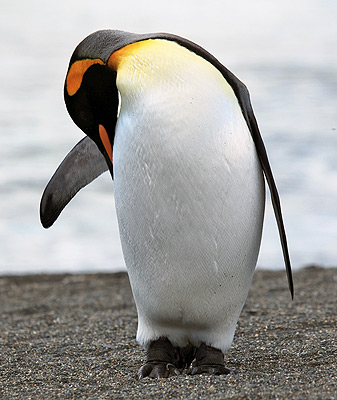 6
- Penguins collect air in their feathers by preening
especially before going to sea, it insulates against
the cold. This trapped air helps the penguin swim at
top speed by releasing as tiny bubbles which reduce
drag, very useful when escaping predators.
6
- Penguins collect air in their feathers by preening
especially before going to sea, it insulates against
the cold. This trapped air helps the penguin swim at
top speed by releasing as tiny bubbles which reduce
drag, very useful when escaping predators.
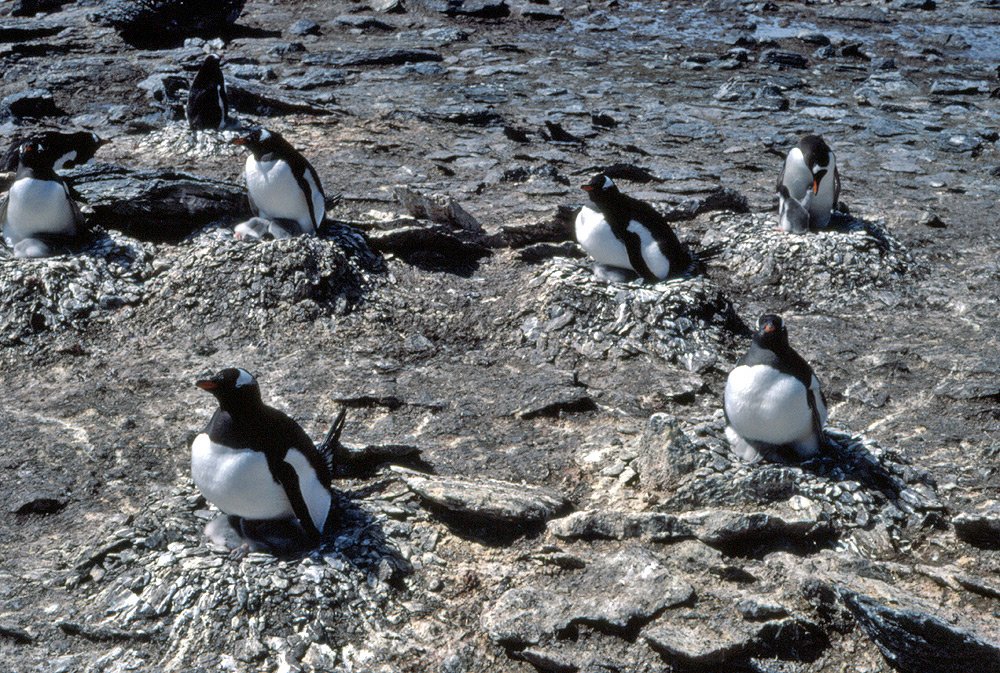 7
- All penguins apart from King and Emperor penguins
build a nest. They are a low pile of stones so if
the temperature rises and snow melts, the nest is not
flooded.
7
- All penguins apart from King and Emperor penguins
build a nest. They are a low pile of stones so if
the temperature rises and snow melts, the nest is not
flooded.
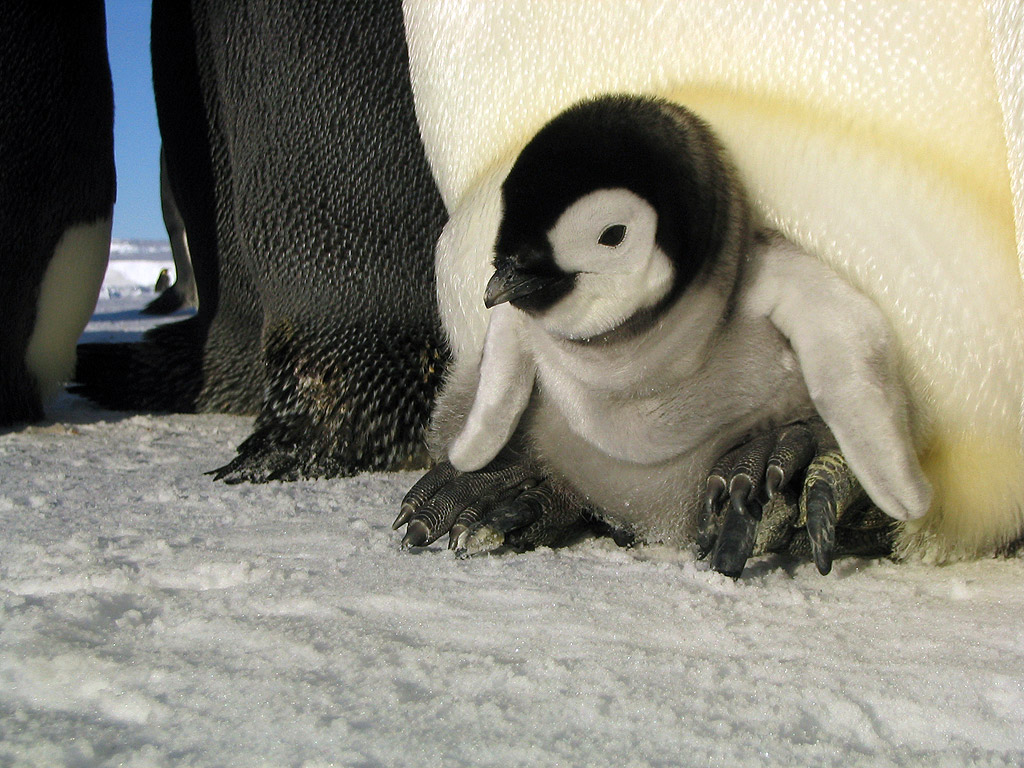 8
- Emperor and King penguin parents keep their egg and
then the young chick on their feet, it is covered
by a flap of skin called a brood pouch until they are
large enough to keep themselves warm.
8
- Emperor and King penguin parents keep their egg and
then the young chick on their feet, it is covered
by a flap of skin called a brood pouch until they are
large enough to keep themselves warm.
 9
- Penguins often nest in large colonies which makes
it easier to head out to sea together, this helps them
fish for food better and avoid predators both in the
sea and on land.
9
- Penguins often nest in large colonies which makes
it easier to head out to sea together, this helps them
fish for food better and avoid predators both in the
sea and on land.
 10
- Like other birds, penguins lay eggs which have
to be kept warm all the time, the parents take it in
turns to look after the egg or go to sea to feed.
10
- Like other birds, penguins lay eggs which have
to be kept warm all the time, the parents take it in
turns to look after the egg or go to sea to feed.
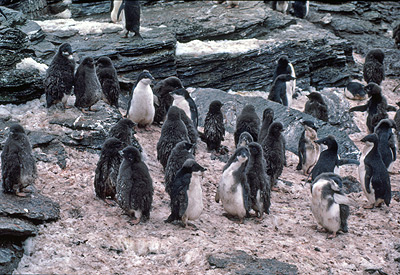 11
- Chicks are fed on the nest by the parents until
they are big enough to join a creche for protection
against predators, this lets both parents to go to sea
at the same time to catch more food.
11
- Chicks are fed on the nest by the parents until
they are big enough to join a creche for protection
against predators, this lets both parents to go to sea
at the same time to catch more food.
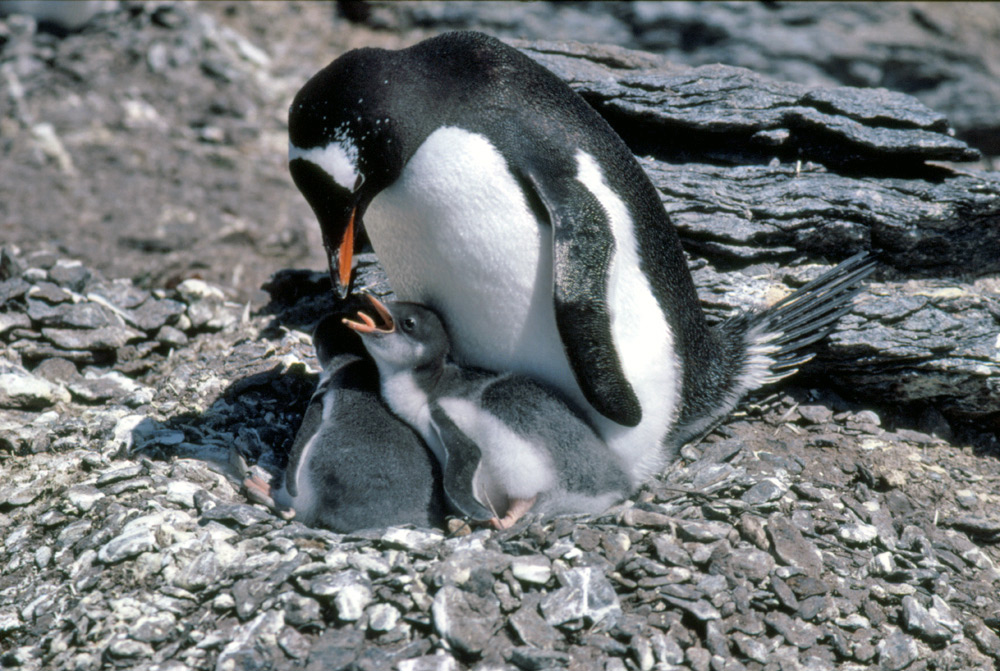 12
- Smaller penguins migrate north to escape the hard
Antarctic winter, they return in the short summer
to make the most of abundant food and rear their chicks.
12
- Smaller penguins migrate north to escape the hard
Antarctic winter, they return in the short summer
to make the most of abundant food and rear their chicks.
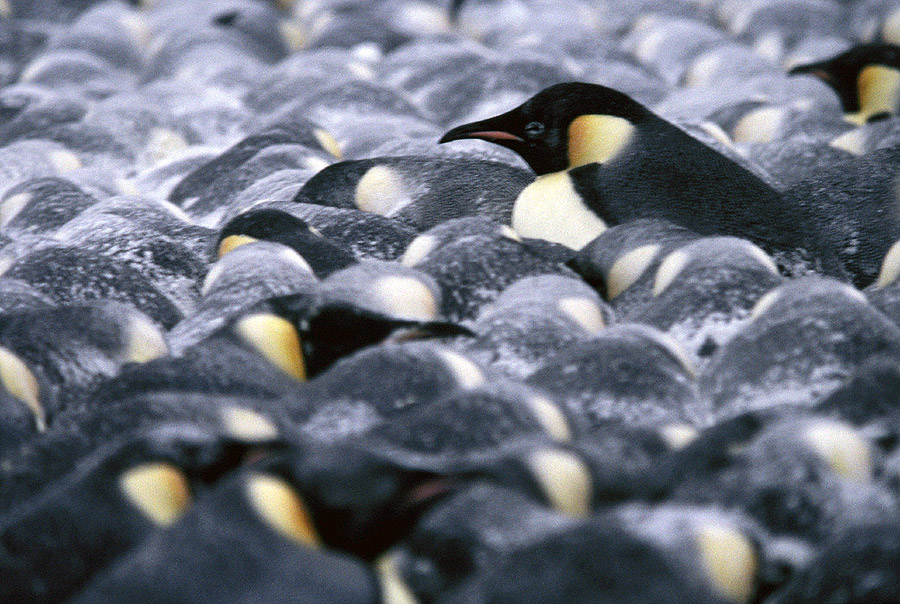
13 - Emperor penguins form huddles to keep warm in the
coldest weather, they take it in turns to be on
the outside or in the middle!
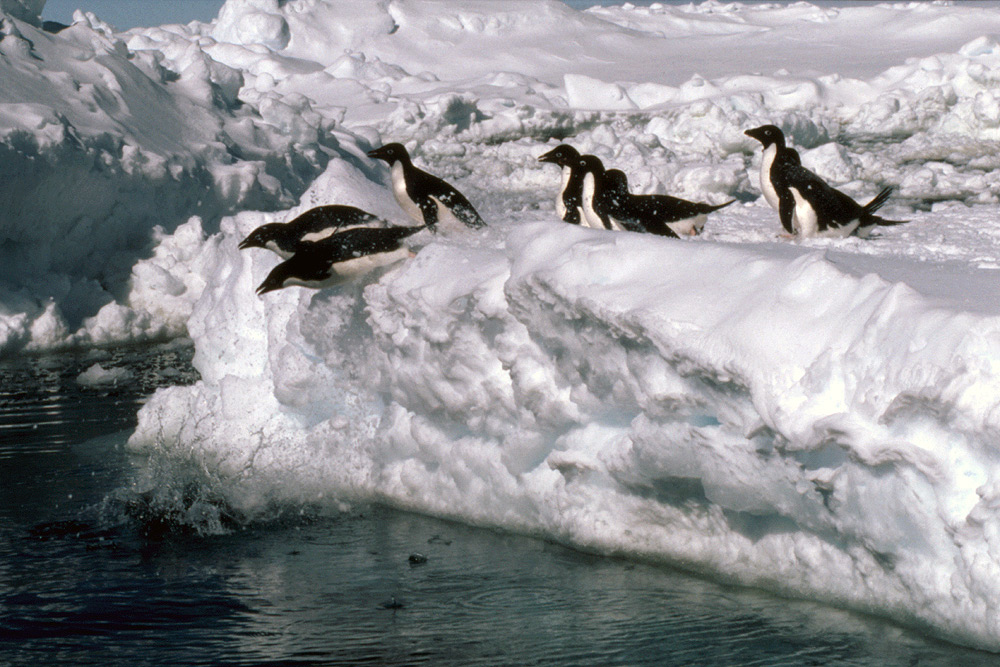 14
- Penguins gather at the ice edge in groups before
jumping in the sea. This confuses any predators that
might be about and increases each penguins chance of
survival.
14
- Penguins gather at the ice edge in groups before
jumping in the sea. This confuses any predators that
might be about and increases each penguins chance of
survival.
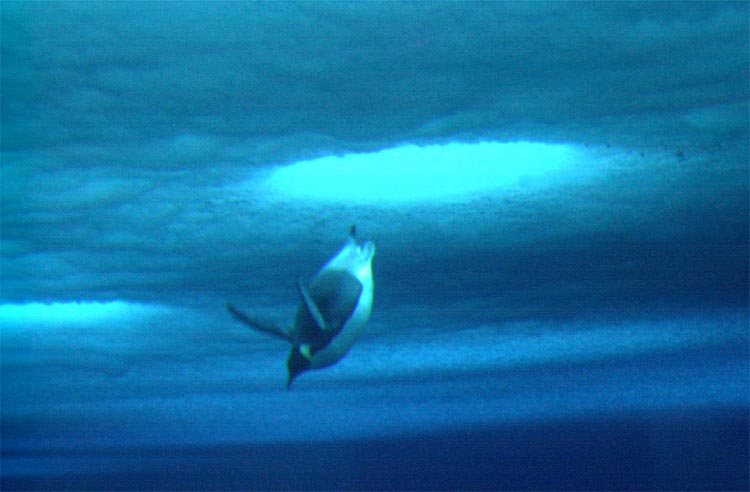 15
- During a deep dive, a penguins' heart rate slows
from 80-100 down to 20 beats per minute to let them
dive for longer.
15
- During a deep dive, a penguins' heart rate slows
from 80-100 down to 20 beats per minute to let them
dive for longer.
Picture credits: Penguin feet - eileenmak under creative commons, attribution 2.0 generic licence. / Preening penguin - Liam Quinn from Canada, under creative commons, attribution 2.0 share-alike licence.
